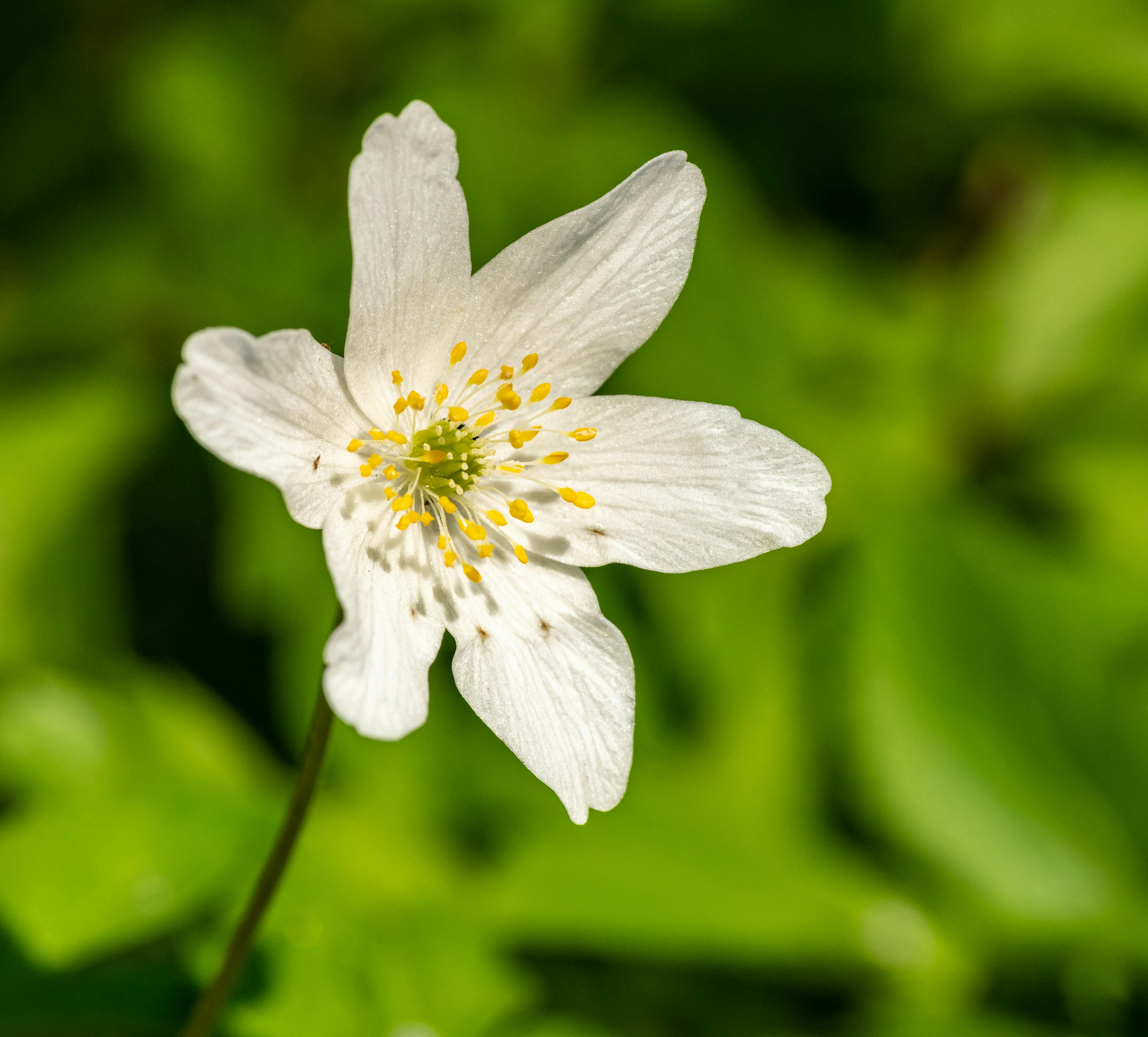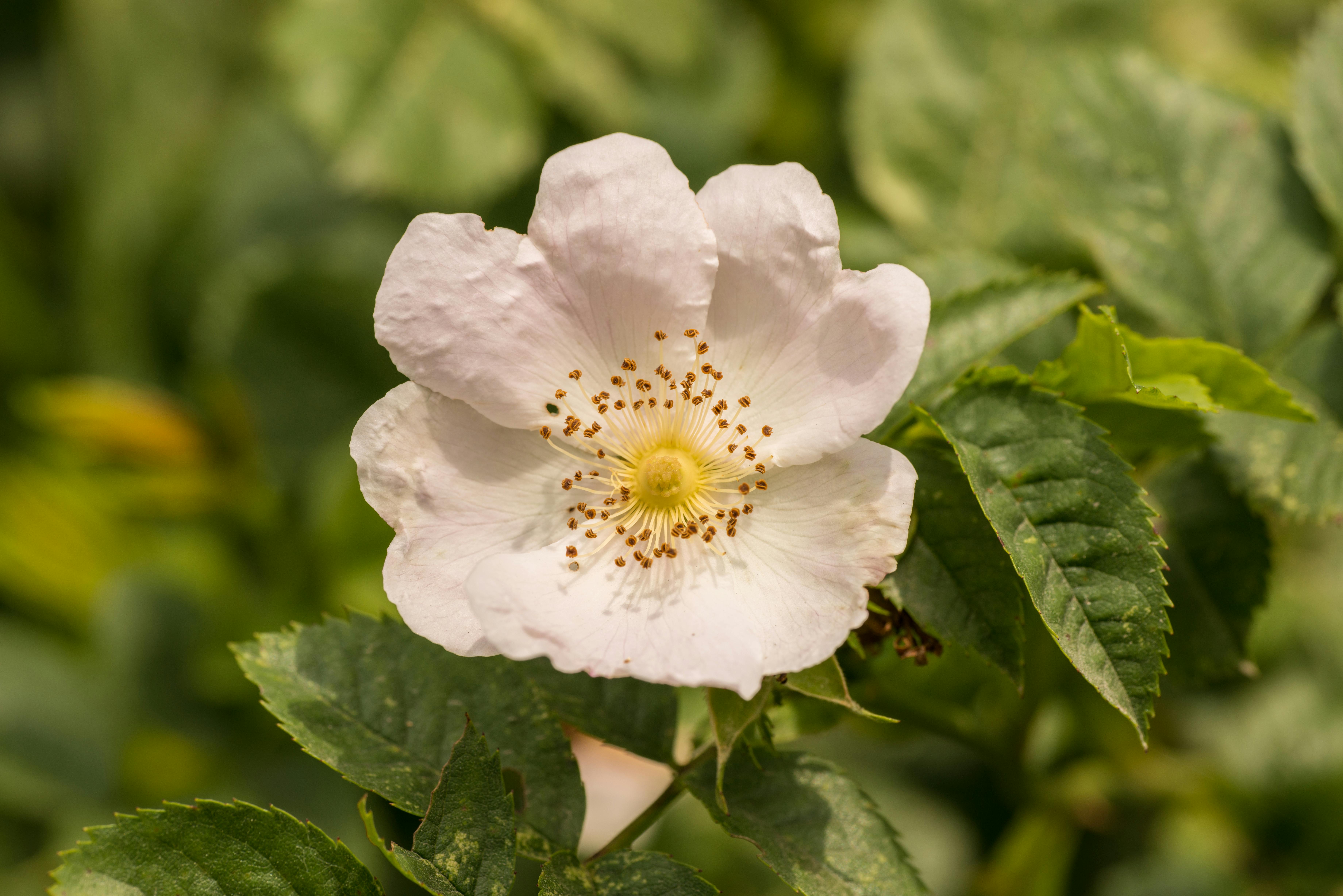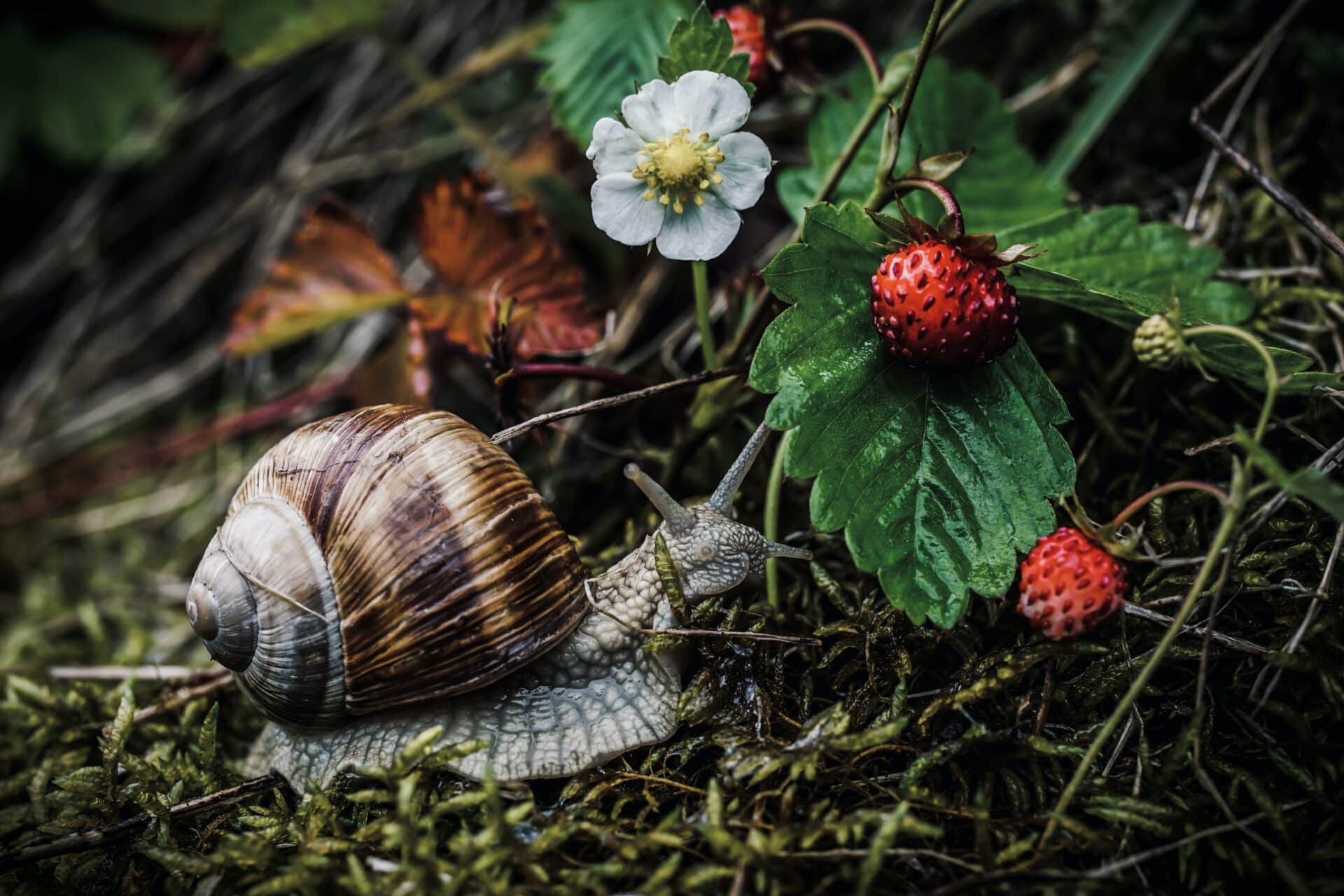Strawberry plants are a popular choice for home gardeners, as they produce delicious fruit and are relatively easy to grow. However, one of the most common problems strawberry growers face is that their plants don’t flower. If your strawberry plant isn’t flowering, there could be several causes. In this article, we will look at some of the possible reasons why your strawberry plant isn’t flowering and discuss what you can do to get it producing flowers and fruit.1. Not enough sunlight: Strawberry plants need at least 6-8 hours of direct sunlight each day in order to flower. If the plant is not receiving enough sunlight, it may not flower.
2. Insufficient nutrients: Plants require a balanced supply of nutrients in order to flower. If the soil does not contain sufficient amounts of essential nutrients such as nitrogen, phosphorus, and potassium, the plant may not be able to produce flowers.
3. Too much water: Overwatering can prevent strawberry plants from flowering as the soil becomes waterlogged and lacks oxygen for proper root development.
4. Poor soil quality: Poor soil quality can prevent strawberry plants from flowering as it may be too compacted and lack adequate drainage or contain an imbalance of nutrients and minerals necessary for healthy growth and fruiting.
5. Temperature fluctuations: Extreme temperatures can also cause strawberry plants to fail to flower or produce poor quality fruit due to stress caused by temperature fluctuations between night and day or seasonally.
Temperature Can Affect Strawberry Plant Flowering
Strawberry plants are sensitive to temperature and need specific conditions in order to flower and produce fruit. Too much or too little heat can affect the growth of the plant and its ability to flower. Temperature is an important factor when it comes to growing strawberries, as it affects the rate at which the plants grow and the amount of flowers they produce.
The ideal temperature range for strawberry plants is between 18–22°C during the day, and 12–14°C at night. If temperatures drop below 12°C, this can reduce the number of flowers produced by the plant. Conversely, if temperatures rise above 25°C, this can cause flowers to drop prematurely. In addition, high temperatures can reduce fruit production, as well as delay flowering.
The best way to ensure that strawberry plants have the optimal temperature range is by monitoring temperature levels closely. This means checking both indoor and outdoor temperatures on a regular basis so that any changes or fluctuations can be identified quickly. It’s also important to provide adequate ventilation for strawberry plants in order to keep them cool during hot weather. If possible, avoid planting strawberries in sunny locations where temperatures may become too high.
By providing strawberries with optimal temperature conditions, gardeners will be able to maximize their yield of fruit from these popular plants. Therefore, understanding how temperature affects strawberry plant flowering is an important part of successful strawberry growing.
Do Strawberries Need Sunlight to Flower?
Yes, strawberries require an adequate amount of sunlight to flower and produce fruit. In fact, strawberries need between 8-10 hours of sunlight per day during the flowering and fruiting season. If they don’t receive enough light, the plant will not flower or produce a crop. Therefore, it is important to ensure that any strawberry plant is placed in a location that receives adequate sunlight in order for it to reach its full potential.
Strawberry plants can survive in partial shade, but they will not flower or produce much fruit. As such, it is best to choose a sunny location when planting strawberries. If you do have limited sun exposure, consider planting varieties that are more tolerant of shade for better results.
It is also important to note that too much sun can be detrimental to strawberry plants as well. If the plants are exposed to intense midday sun for too long, they could suffer from sunburn or other heat-related issues. To avoid this problem, consider providing some form of shade during the hottest times of day or planting varieties that are more tolerant of heat and sun exposure.
Finally, it’s worth noting that although strawberries require an adequate amount of sunlight in order to flower and produce a crop, they also need other conditions in order to thrive. This includes good soil with plenty of organic matter and regular watering throughout the season. By providing your strawberry plants with all these necessary conditions, you can ensure they have the best chance at producing a healthy crop of delicious fruits!
Ideal Soil Conditions for Strawberry Flowering
Strawberry plants need well-drained, nutrient-rich soil in order to produce healthy flowers and fruits. The ideal pH range for strawberry plants is 6.0 to 6.5, which is slightly acidic. The soil should also be high in organic matter, such as compost or peat moss, to provide nutrients and retain moisture. Amending the soil with plenty of organic matter prior to planting can help improve drainage and increase fertility.
In addition to providing an appropriate pH level and organic matter, strawberry plants also need a steady supply of nitrogen, phosphorus, and potassium. A fertilizer with a balanced ratio of these three nutrients can be applied at planting time or throughout the growing season as needed. It is important to monitor the soil’s nutrient levels; too much fertilizer can burn the plant’s roots and reduce its yield.
Strawberries also require plenty of sunlight in order to flower and produce fruit. Six hours of full sun every day is recommended for optimal growth; however, some varieties can tolerate partial shade or filtered sunlight if necessary. Additionally, keeping the soil evenly moist throughout the growing season will ensure healthy flowers and a good harvest. Overwatering can lead to root rot or other problems; therefore, it is best to water deeply but infrequently rather than lightly but often.
Overwatering Preventing Strawberry Plant from Flowering?
Strawberry plants need specific conditions in order to flower and produce fruit, and overwatering can prevent them from doing so. Too much water can cause the roots to rot which can lead to a decrease in the amount of nutrients being taken up by the plant, and this in turn can stunt growth and limit flowering. In addition, waterlogging can encourage the growth of fungal pathogens which can further damage the plant and its ability to flower. It is important then for gardeners to ensure that strawberry plants are not overwatered, as this could lead to a decrease in the number of flowers produced.
In order to prevent overwatering, gardeners should follow a regular watering schedule and provide their plants with only as much water as they need. Water should be applied directly to the soil around the base of the plant, ensuring that no water runs off or pools around it. The soil should also be well-draining so that any excess water is able to escape quickly. Additionally, gardeners should check their plants regularly for signs of over-watering such as wilting leaves or yellowing foliage, as these could indicate that there is too much water being applied.
Finally, it is important for gardeners to be aware of their local climate when it comes to watering their strawberry plants. In areas with hotter climates, more frequent watering may be necessary; however, in cooler climates more infrequent watering may be required. By taking into account these factors and adjusting their watering schedule accordingly, gardeners can ensure that their strawberry plants have all they need in order to reach their full potential and produce an abundance of flowers.

Too Much Nitrogen in the Soil Could Prevent Plant From Flowering
Nitrogen is an essential nutrient for plant growth and development, but too much nitrogen in the soil can prevent a plant from flowering. Excess nitrogen in the soil can cause plants to produce more leaves and stems and less flowers. This is because the extra nitrogen encourages vegetative growth over reproductive growth. Plants use nitrogen to create proteins which are essential for cell division and growth, so when they receive an abundance of nitrogen, they will focus on growing foliage rather than flowers.
Nitrogen is a mobile nutrient, meaning it can move through the soil down to the roots of a plant where it is absorbed and used for growth. If too much nitrogen accumulates in one area of the soil, it can prevent other nutrients from reaching the roots of a plant, resulting in a lack of flower production. Too much nitrogen can also cause plants to be more susceptible to diseases or pests due to weakened immunity.
To prevent too much nitrogen from building up in your soil, avoid over-fertilizing or applying too much manure or compost. Instead, opt for slow-release fertilizers that will ensure that your plants get adequate amounts of nutrition without risking an overload of nitrogen. Additionally, make sure you are watering your plants regularly as this helps flush out any excess nutrients in the soil. Finally, test your soil periodically so that you know what nutrients are present and how much you should be adding to keep your plants healthy and flowering properly.
Certain Pests or Diseases Cause a Strawberry Plant to Stop Flowering
Strawberry plants are susceptible to many pests and diseases, which can cause them to stop flowering. These include fungi, bacteria, viruses, nematodes, and insects. Fungi such as powdery mildew and botrytis can cause strawberry plants to stop flowering. Bacterial infections like anthracnose and crown rot can also prevent plants from blooming. Viral diseases like leaf curl and strawberry mottle mosaic can cause buds to fail to open.
Nematodes are microscopic worms that feed on the roots of strawberry plants and can reduce flowering. Insects such as aphids, thrips, whiteflies, weevils, earwigs, cutworms, slugs and snails can also damage the flowers of strawberries by eating the petals or buds. In addition, some of these insects may act as vectors for diseases that cause the plant to stop flowering.
It is important to identify any pests or diseases present on your strawberry plants in order to take action against them. The most common way of doing this is by examining the leaves and stems for signs of damage or discoloration that could indicate a pest or disease infestation. If you suspect a problem with your strawberry plant’s flowers, you should contact your local extension office for help in identifying the cause and taking action against it.
In some cases it may be necessary to use chemical pesticides or fungicides in order to control the pests or diseases affecting your strawberries. However, it is important to follow all instructions carefully when using these products in order to ensure their safe use. Additionally, organic methods such as introducing beneficial insects into your garden may be effective alternatives for controlling pests without harming beneficial organisms or polluting the environment with chemicals.
By properly identifying pests and diseases affecting your strawberry plants and taking action against them accordingly, you can ensure that they remain healthy and continue producing beautiful flowers throughout the growing season!
Is Fertilizer Necessary for a Strawberry Plant to Produce Flowers?
Fertilizer is an important part of caring for a strawberry plant. It helps the plant obtain essential nutrients that it needs to produce flowers and fruit. Without fertilizer, the strawberry plant may not bloom or have a good yield of fruit.
Fertilizer helps the strawberry plant by providing essential nutrients such as nitrogen, phosphorus, and potassium. These nutrients are necessary for healthy growth and will help the strawberry flowers to bloom. Fertilizer also helps to increase the number of flowers produced on each plant. This can lead to more fruit being produced, which will help increase your harvest.
When applying fertilizer to a strawberry plant, it is important to use one that is specifically designed for strawberries. This will ensure that the fertilizer has all of the nutrients needed for optimal growth and flowering. It is best to apply fertilizer at least twice per season; once in early spring and then again in late summer or early fall.
It is also important to make sure that you are not over-fertilizing your strawberry plants as this can lead to nutrient burn or other problems with the plants. To avoid this, it is best to follow the instructions on the fertilizer package when applying it to your plants.
In conclusion, while fertilizer is not absolutely necessary for a strawberry plant to produce flowers, it does provide essential nutrients that help promote healthy growth and flowering. Applying fertilizer correctly will help ensure your plants have enough of these essential nutrients so they can produce a good yield of fruit each season.

Conclusion
The reasons why a strawberry plant may not be flowering can vary. It is important to assess the environmental conditions of the plant and ensure that they are optimal for the growth and flowering of the strawberry plant. In some cases, it may be necessary to supplement the environment with additional nutrients or to adjust the growing conditions. Furthermore, an assessment of any potential pests or diseases should also be done in order to ensure that these are not hampering flower growth. With careful monitoring and attention, it is possible to get your strawberry plant flowering in no time.
Overall, a lack of flower production on strawberry plants can usually be traced back to environmental factors. When determining why a strawberry plant isn’t flowering, it is important to examine the entire environment and adjust any variables as needed. Additionally, pests or diseases should also be examined in order to rule out any potential issues that could prevent flower production. With careful observation and attention, you can get your strawberry plant flowering in no time.



